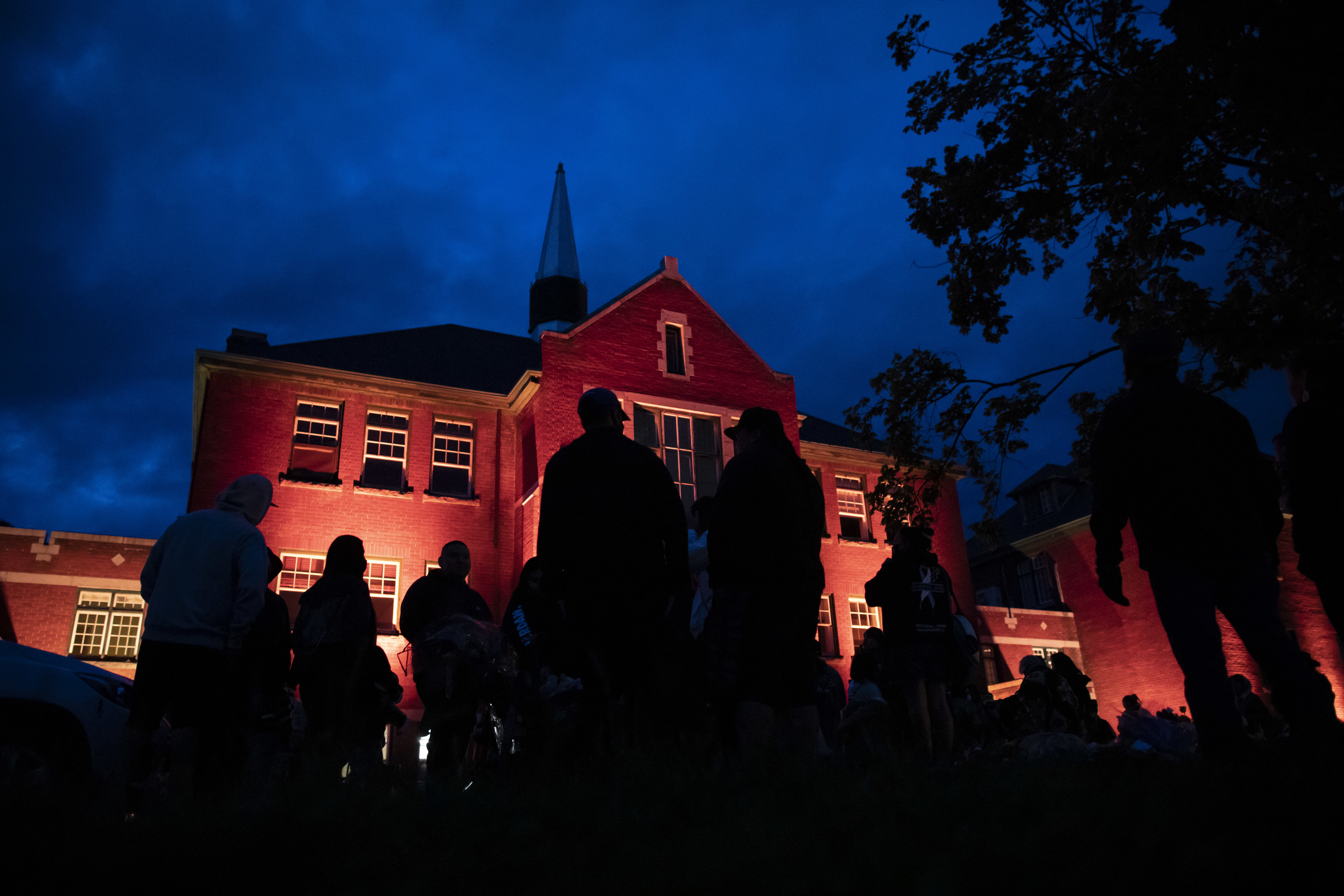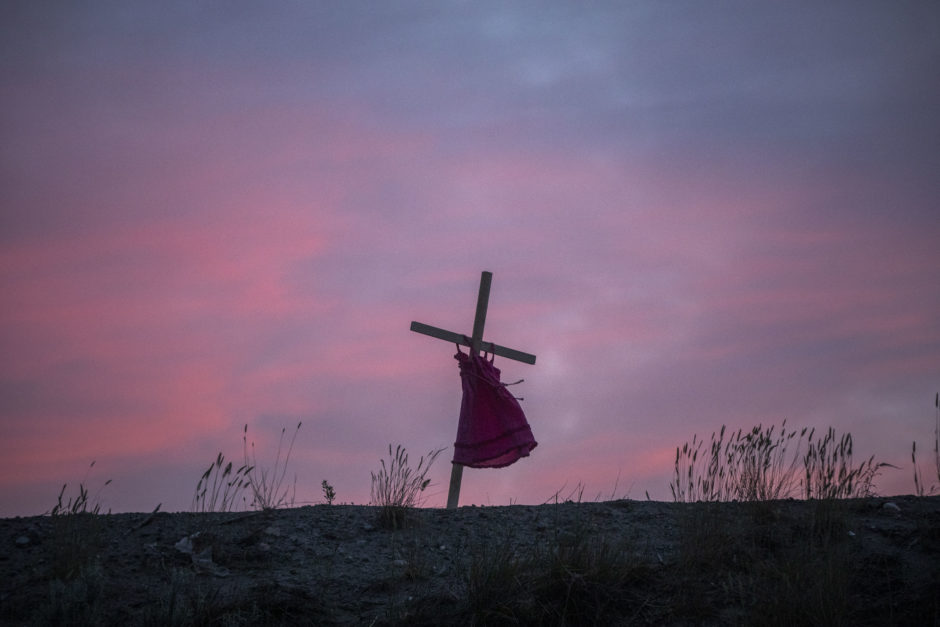WARNING: This story contains distressing details.
They came to Kamloops by the hundreds — from B.C. and beyond, Indigenous and non-Indigenous, young, old, alone, together. They stood in the unsettled June weather to spend even the smallest moment in silence.
It had been nine days since the Tk'emlúps te Secwépemc First Nation said a preliminary ground scan had revealed what are believed to be unmarked burial sites of children's remains next to the former Kamloops Indian Residential School. The news compelled many to travel to the grounds to pay their respects in person on Saturday during a public sharing of grief that continued through the weekend.
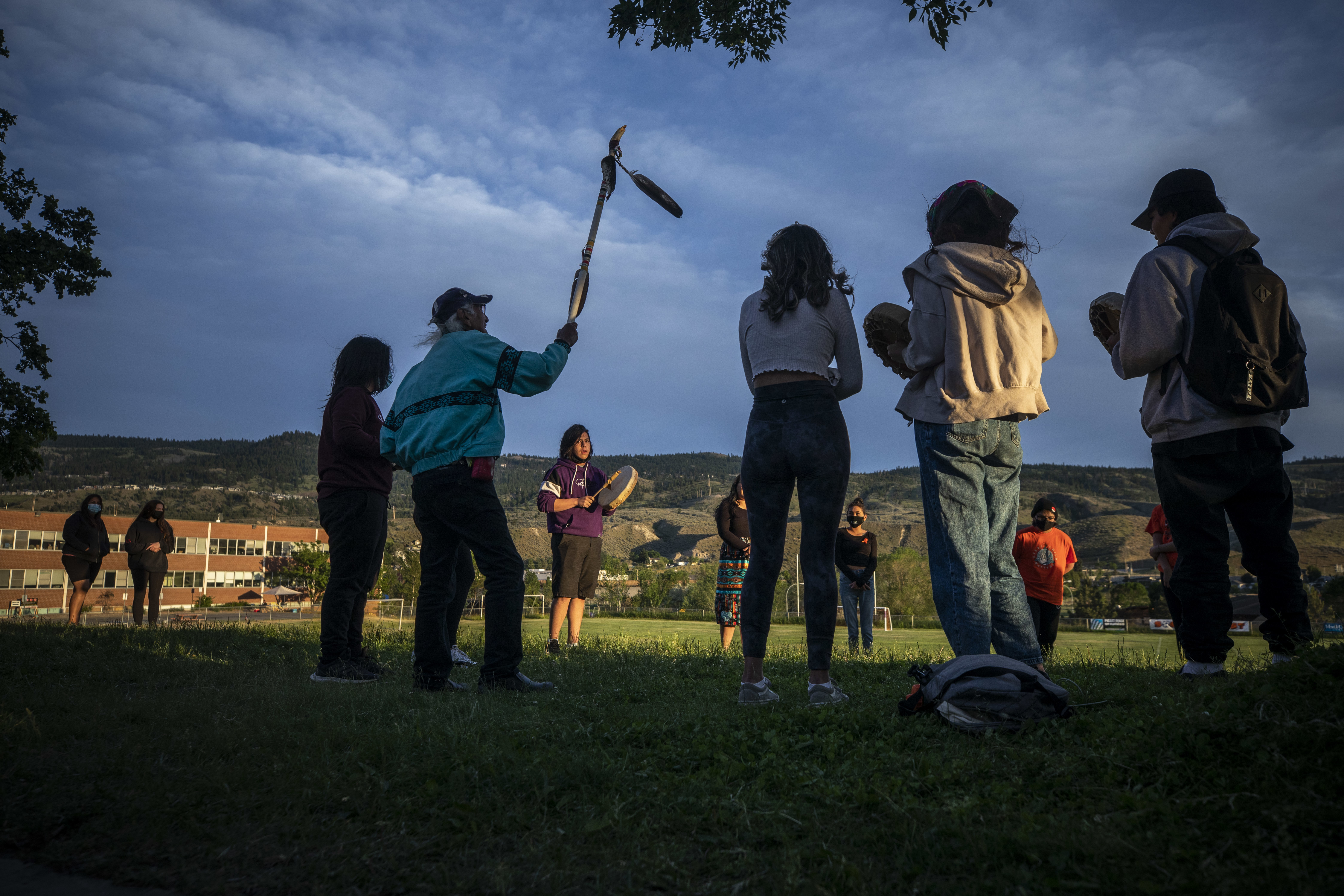
Xakiji Lee Crowchild, from the Tsuut'ina Nation, received a Facebook message last Friday from a friend who was struggling to comprehend the news. "Why don't we go out to Kamloops," Crowchild replied, then at home in Calgary. "Let's go tonight." Within hours, their 600-kilometre journey had begun.
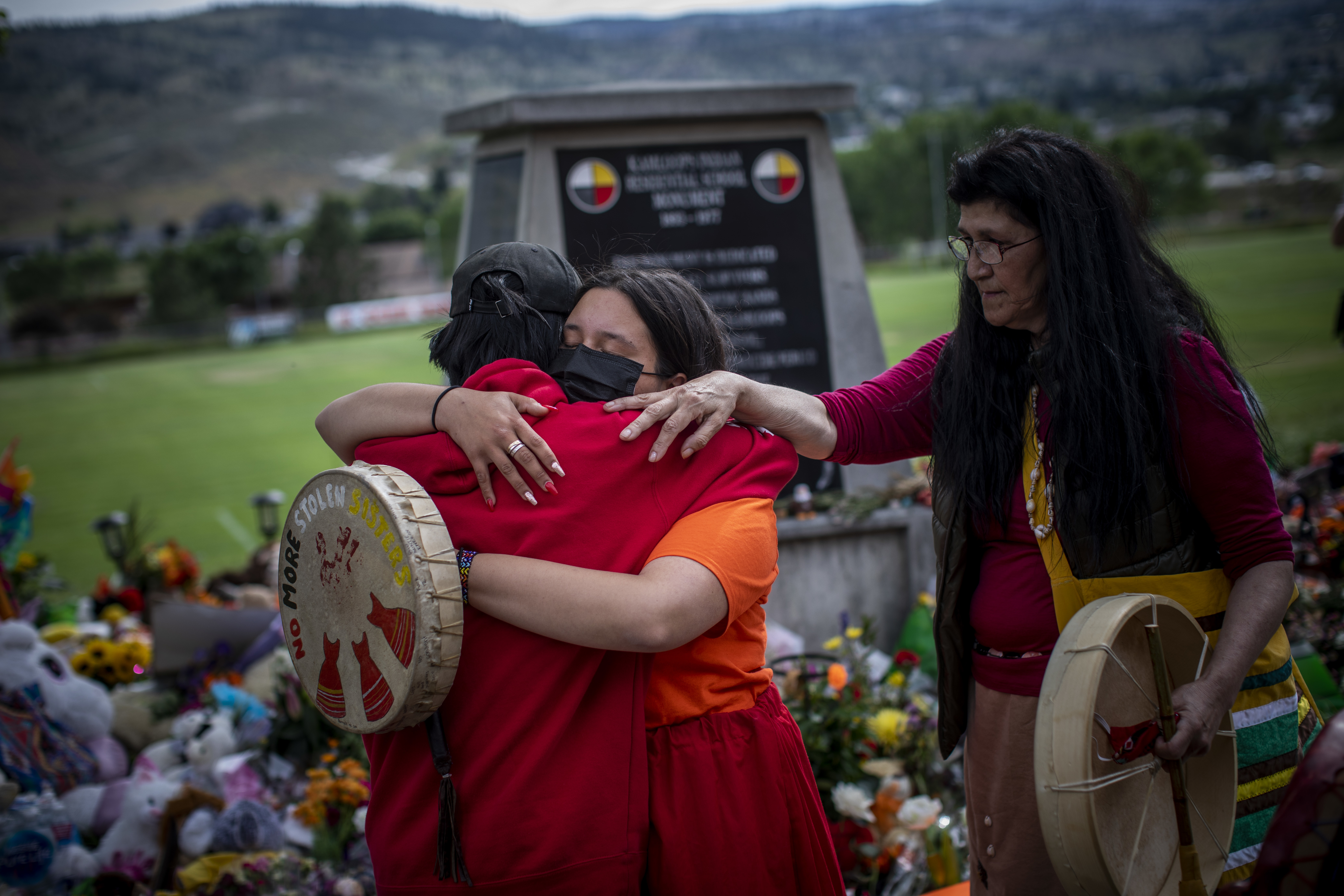
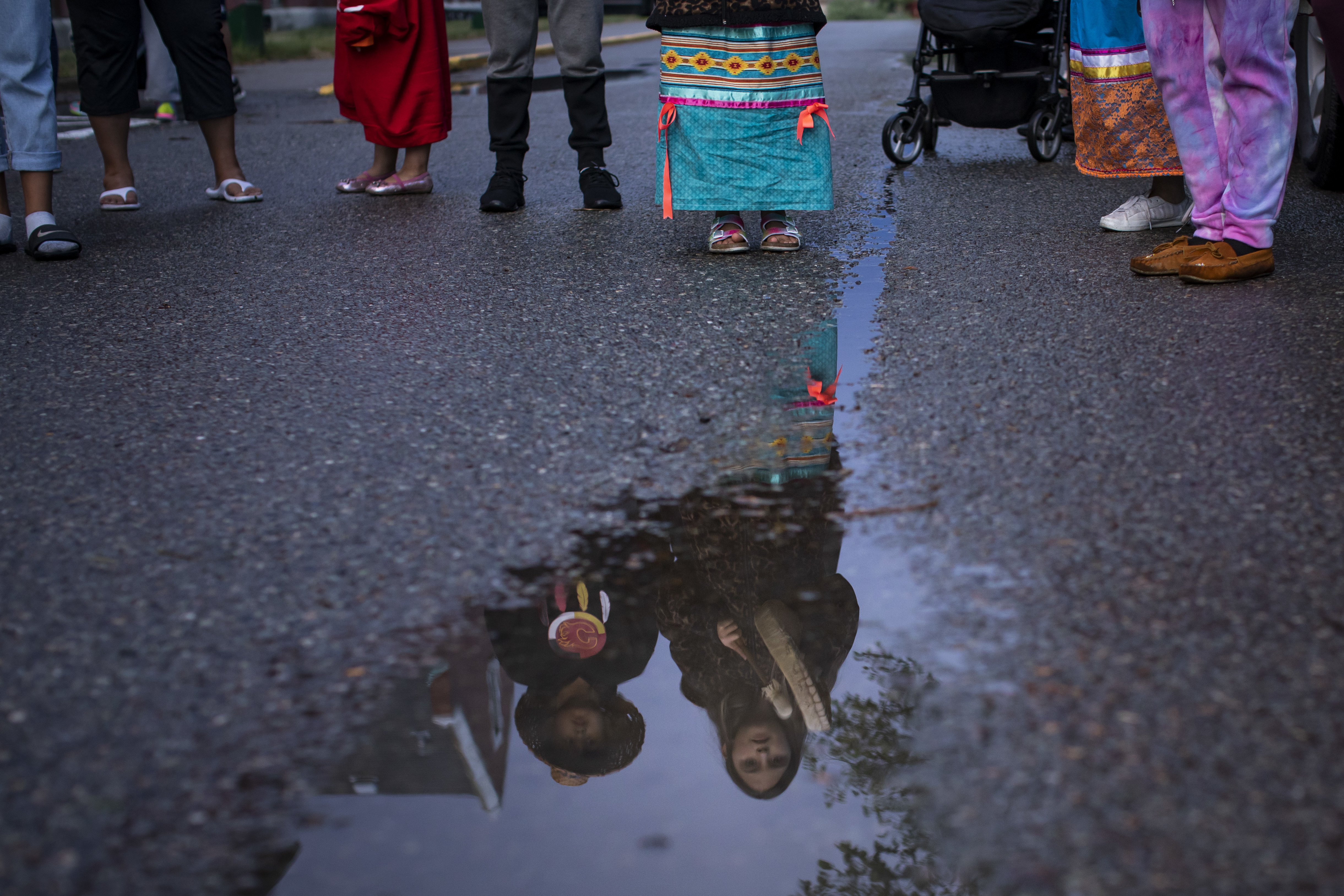
Hours to the west, Jackie Andrew of the Lil'wat, St'at'imc Nation had also started to drive. Andrew, whose traditional name is Macaoz'alus, which translates to Huckleberry Eyes, had been called to Kamloops to offer healing through her role as a traditional grizzly bear dancer. Her grandparents, mother and father all survived residential schools — including Kamloops Indian Residential School, where her father was forced to live from 1951 to 1956.
She prepared traditional medicine and gifts of sage, sweetgrass and tobacco and drove four hours from her home near Pemberton, north of Whistler, before stopping for the night en route. On Saturday, she wore her smoked buckskin dress under her grizzly bear robe — laid over her left shoulder to cover her heart — and went to acknowledge the support of a convoy that had gathered in town. More than 200 truckers from Kelowna, Williams Lake and Merritt had organized the drive to Kamloops to participate in a drum circle and ceremony on the school grounds.
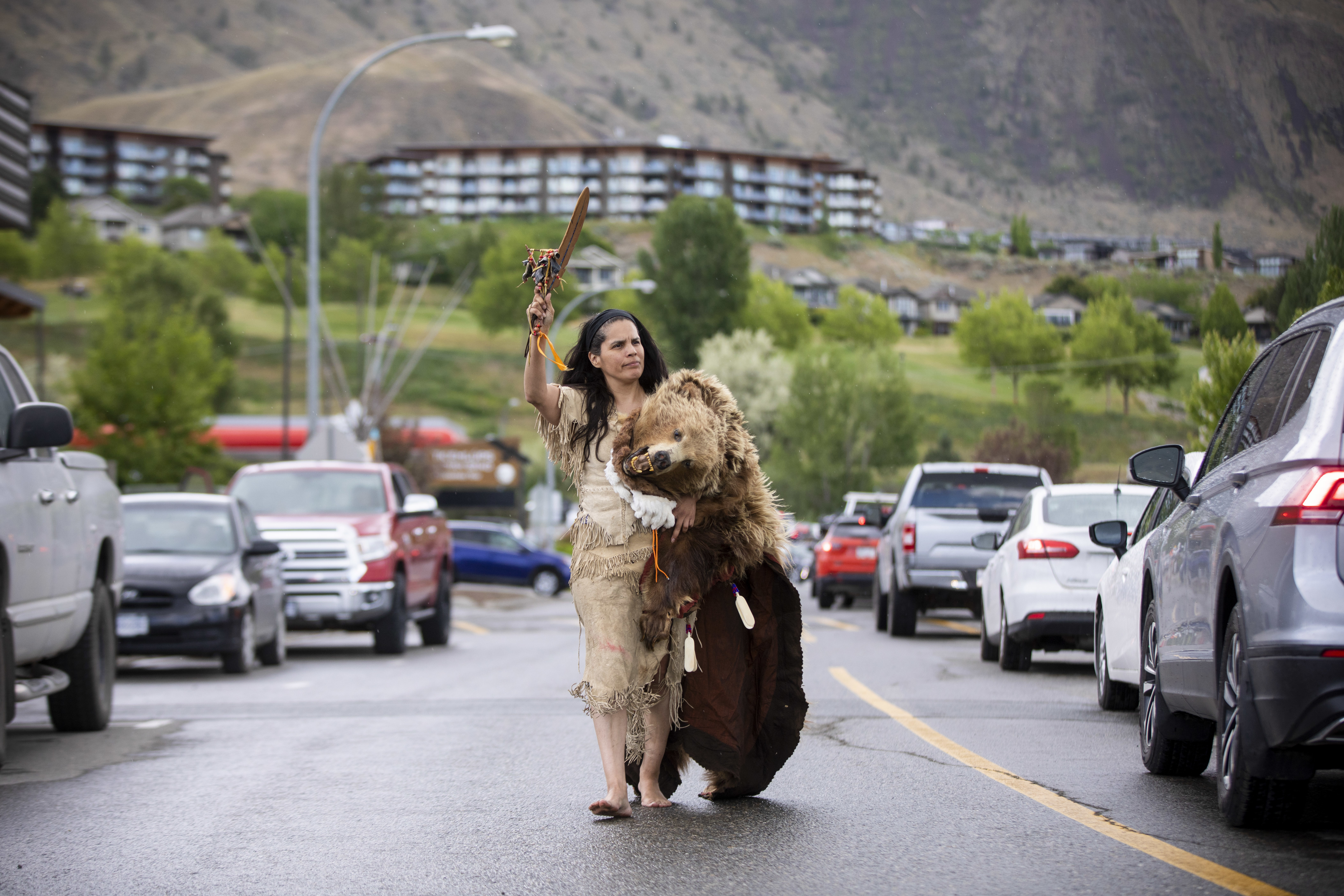
"Once I finished bear dancing and sharing my words, my songs and my ceremony with the truckers ... I realized that I wanted to join the convoy. I wanted to see this through. So I looked around for a truck that might have room for me," said Andrew, 48.
She saw a sturdy, bright red dump truck in the middle of the parking lot. The driver rolled down her window and looked expectantly at Andrew.
"I said, 'Do you have room for me?' She smiled at me — she was a little bit confused — and she looked at her chair and she cleared it off and she’s like, 'Yes, I have room,'"Andrew recalled.
"That was the beginning of a profound relationship that we were building through this very intense journey."
The driver, Katie Marshall, lives in Merritt and joined the convoy when it stopped in the city, about 90 kilometres south of Kamloops. The women shared about their lives, histories and families as they finished the final leg of the drive together.
Crowchild, 64, was among the crowd as the trucks arrived at the school grounds, one after the other after the other.
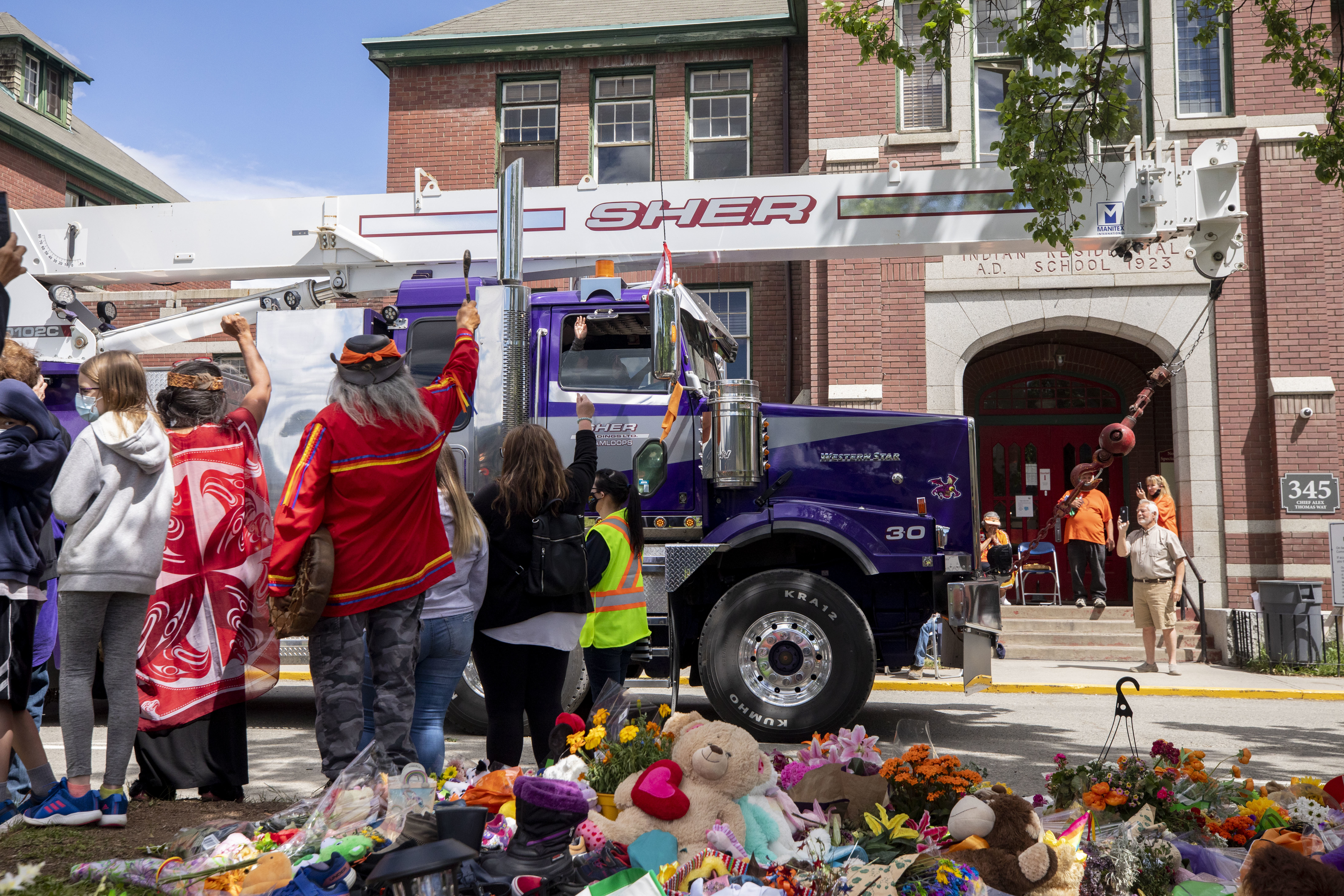
"You got the logging trucks to the garbage trucks, tow trucks, every kind of truck you can think, they're paying their tribute," he said.
Crowchild’s group had stopped after their arrival Saturday at the brick building that was once the main entrance to the residential school, just north of the South Thompson River. A sea of flowers surrounded the stone monument standing out front.
"You see elders standing up and raising their hands and welcoming everybody. There's different drum groups drumming at the same time.... There was a real respectful reverence for the time and space that everybody was in."
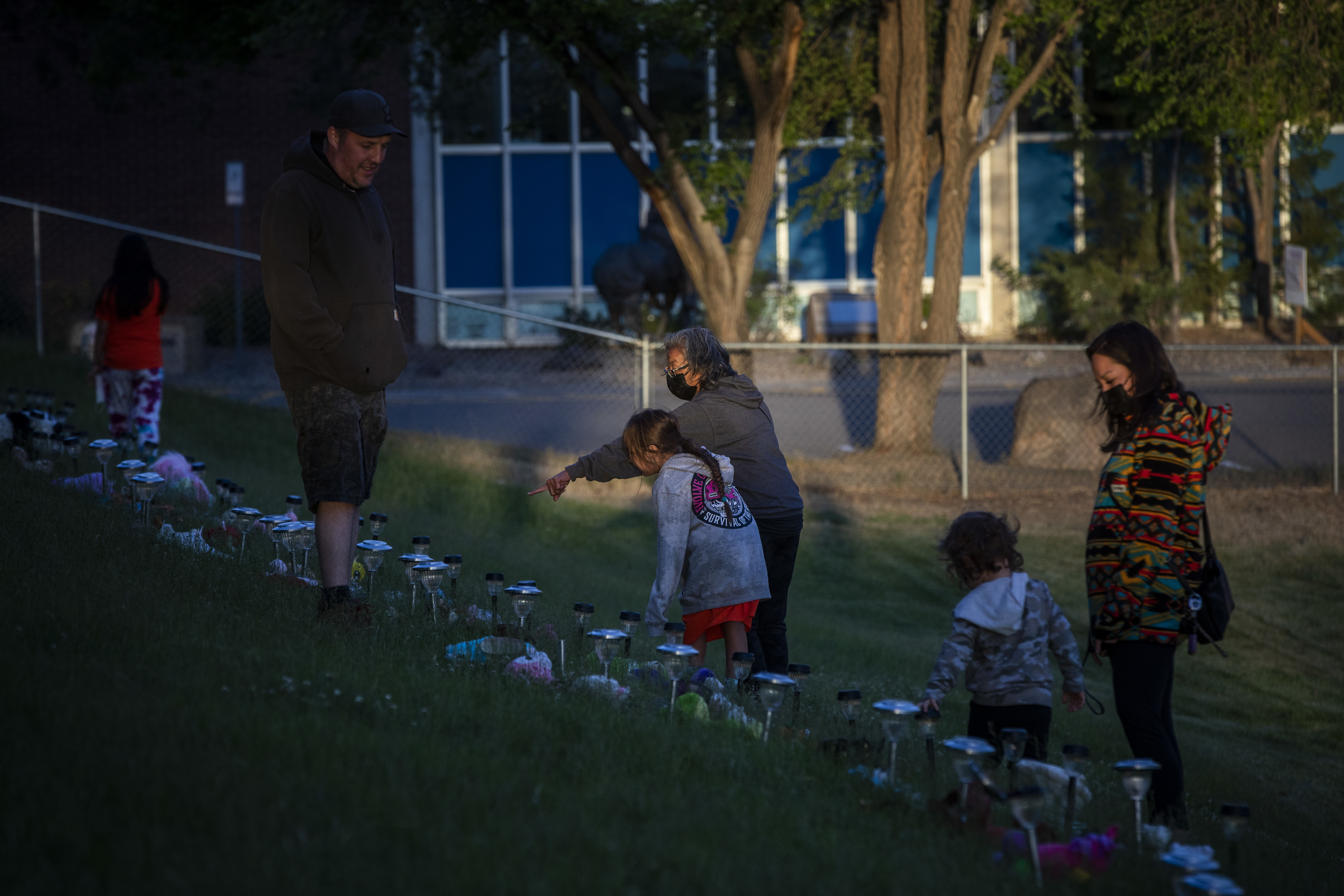
More than 50 riders with the Sikh Riders of Canada Motorcycle Club soon joined, having travelled nearly 300 kilometres from Abbotsford as a tribute. They asked if they could pray, Crowchild recalled.
"They were sharing the pain … that's called catching your tears. You're helping the system so you don't have to grieve alone."
Many people in the crowd wore orange — the colour of the brand-new shirt taken from a six-year-old girl when she arrived at another residential school in B.C. on her first day in 1973, and the colour that has since become a symbol of residential school remembrance. Some laid down teddy bears or concrete planters inscribed with the number many expect will only grow if other schools across the country are searched.
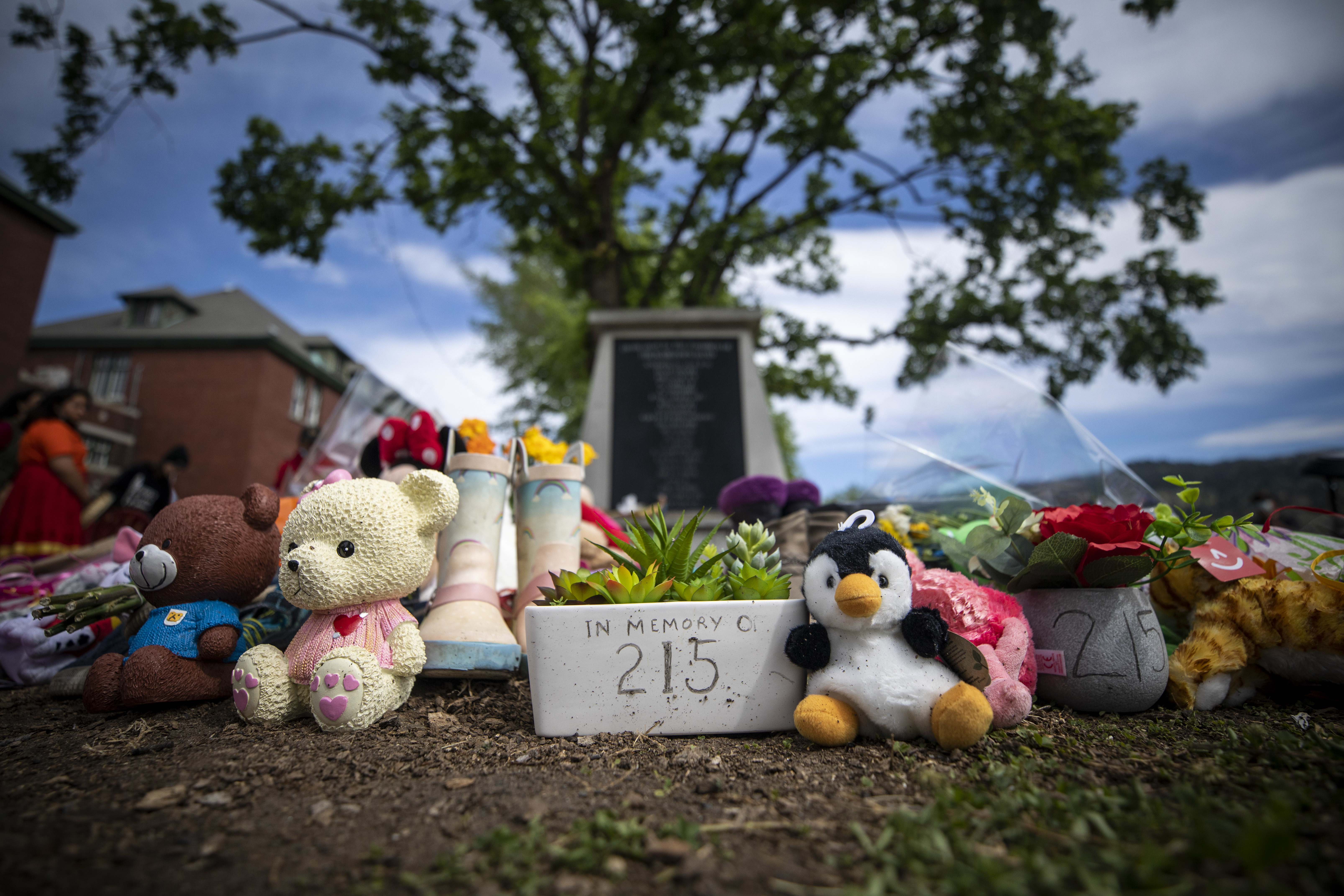
Crowchild said emotions were raw.
"I thought, those 215, I think they're still here," Crowchild said. "The sun that was out ... it warmed us. Then came rain. That's like your tears, washing over us to help get away the lumps in our throat. Now with this gentle breeze, it’s their breath," said Crowchild, who returned home to Calgary later Saturday.
"All along they're saying, we're right here with you. We haven't left. We're right here. But now you have to do something about this. That's your job. The future is dependent on what you do.
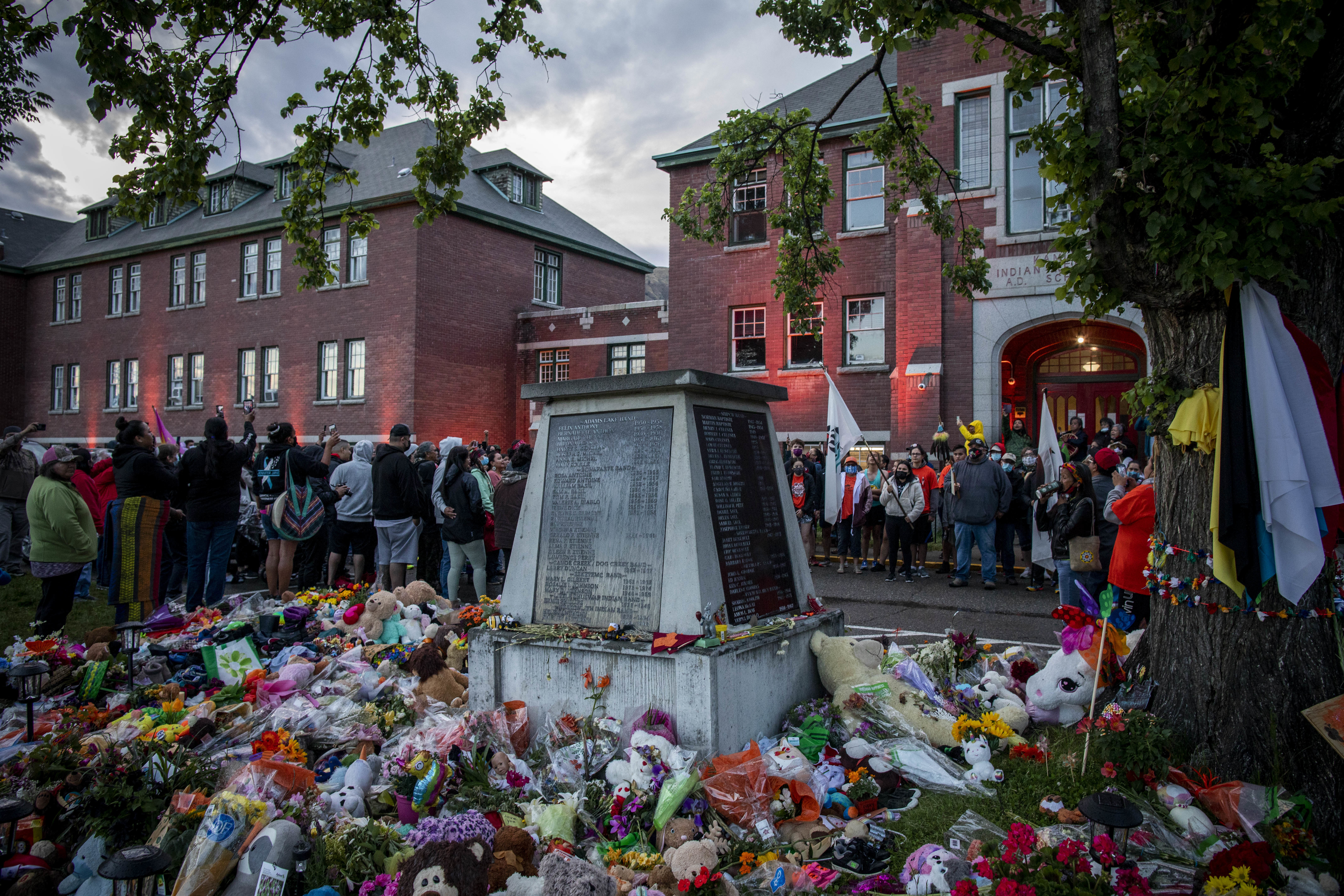
Andrew thought of her father, Chief Leonard Andrew, who was seven when he was forcibly taken to the school from his family home near Mount Currie, B.C. Fellow students mocked him on his first day for knowing only Ucwalmicwts, a dialect of St̓át̓imcets. At nine, he survived a near-drowning in the South Thompson only to be beaten by a Catholic brother angry the boy had fallen into the water.
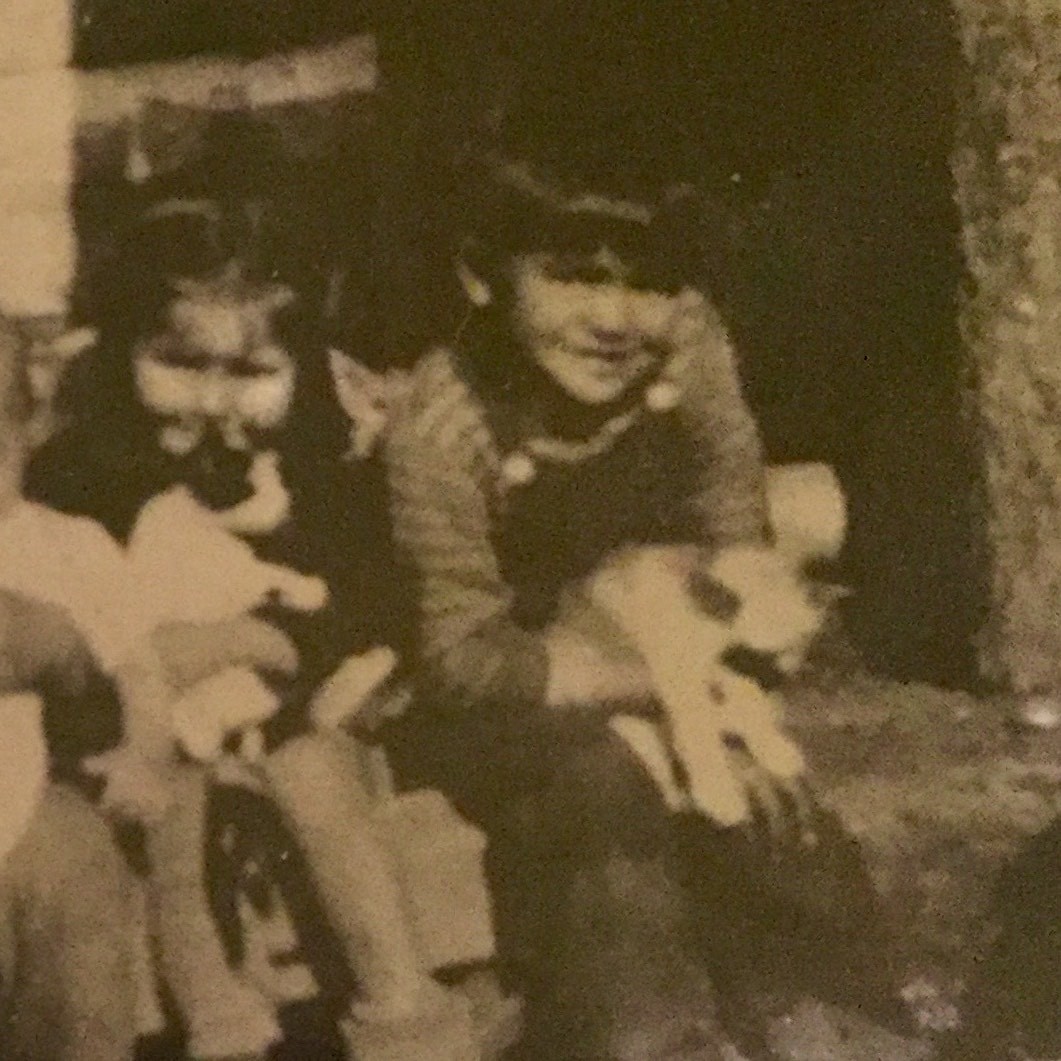
Andrew's father left the school when he was 11. He stayed on the family ranch instead, having agreed to do manual labour from sunrise to sunset and help care for his four younger siblings. Hard work for a young boy, Andrew said, but he was with his parents in a loving and supportive household — it was better than going back.
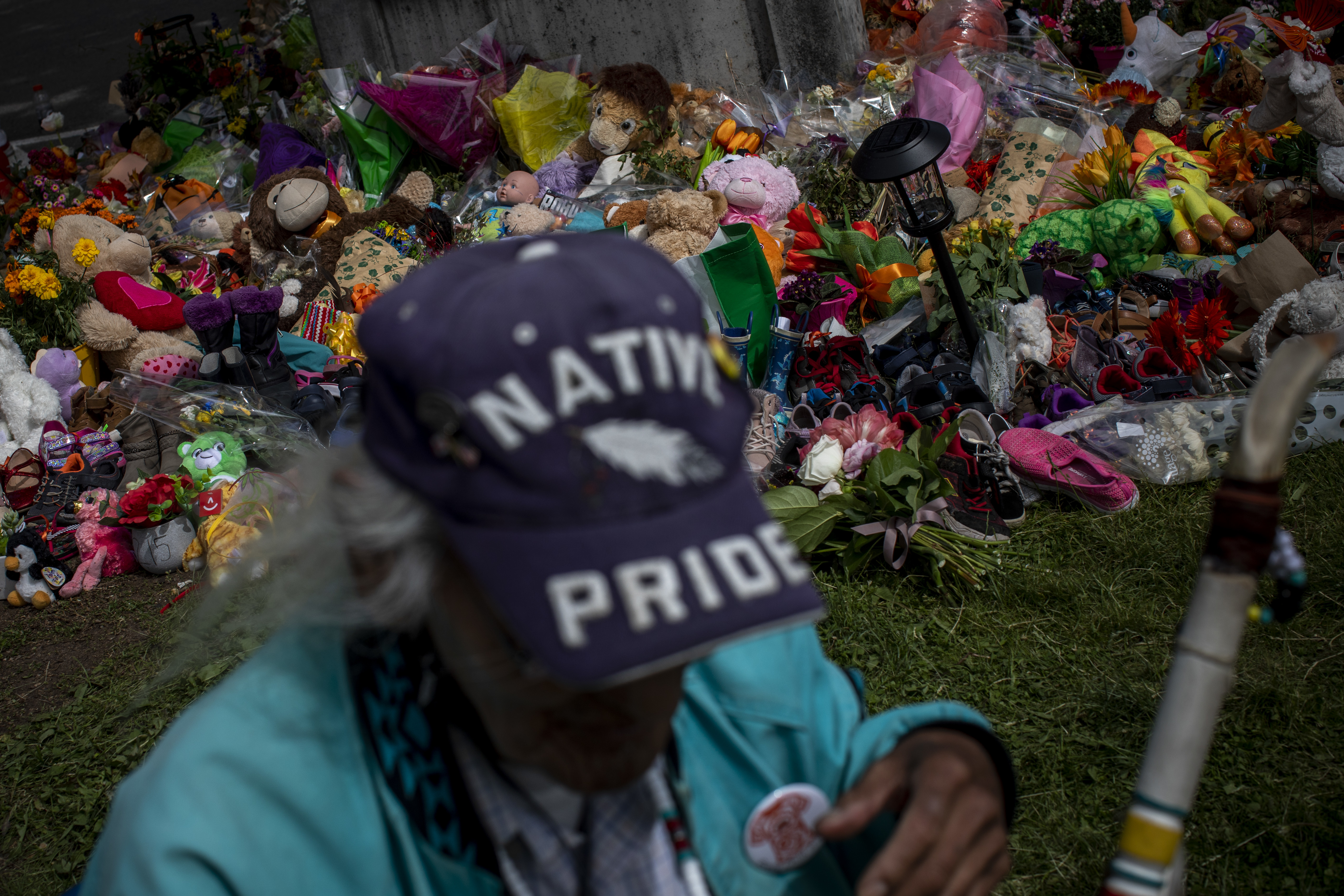
Andrew, who returned home from Kamloops on Sunday, said her father has shared more stories of his experience since the Tk'emlúps te Secwépemc’s announcement.
"I check on my parents every day," she said. "I'm thinking about people and, in general, how significant this is and how this is going to impact our people and also being genuinely concerned about how our people get through this."
Andrew and Crowchild agree a single day of shared grief is not enough for healing. They said the federal government and Catholic church, which ran many of the schools, need to acknowledge accountability beyond an apology. The country as a whole, Crowchild added, needs to confront its racist history.
"That's going to be really painful, but it won't be the pain of First Nations. It will be the pain of Canadians, to really begin to fully understand the magnitude of the genocide on Canadian soil. And then, from that point, you're getting to the actual truth of what happened."
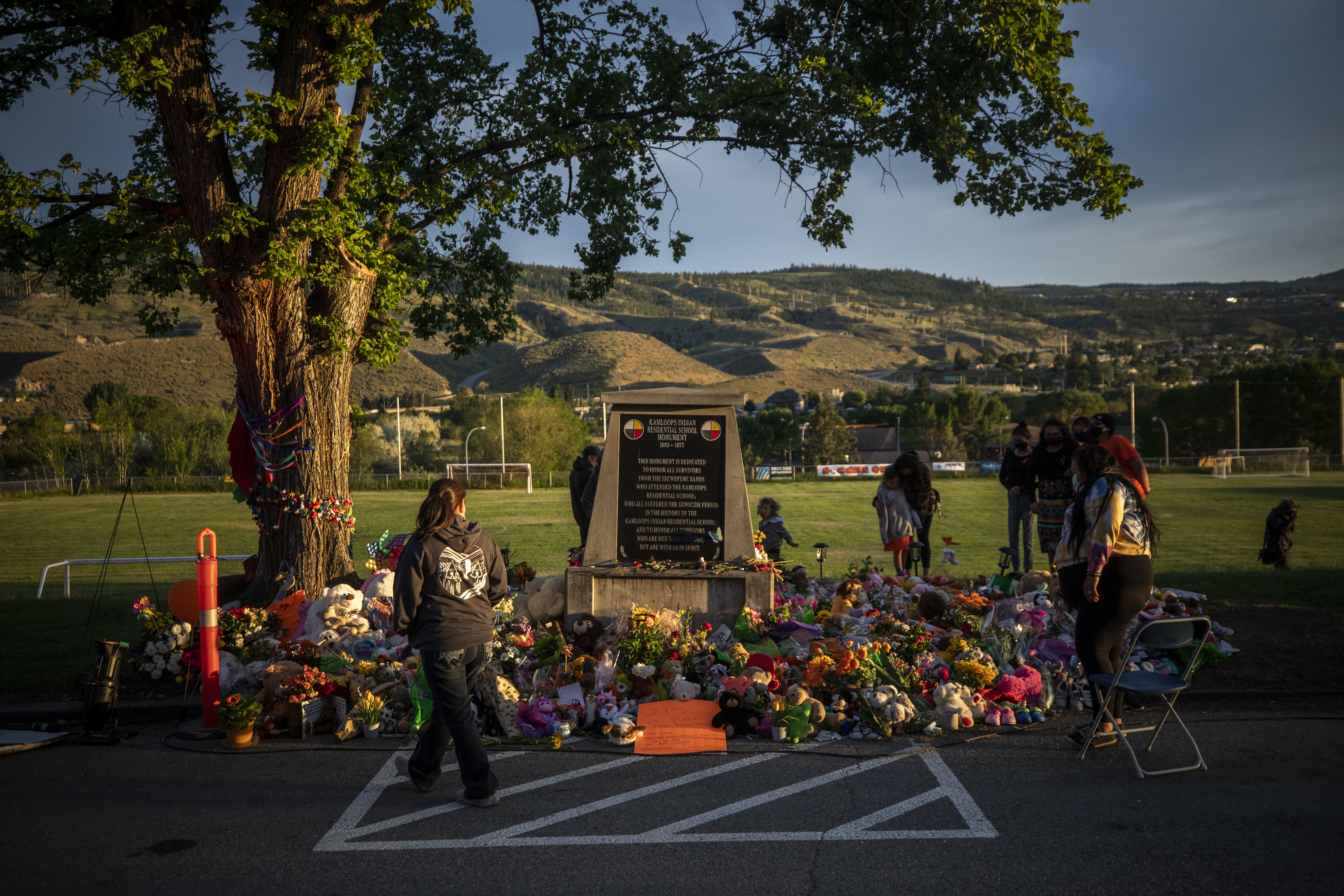
Andrew said a prophecy passed down for generations by First Nations communities across North America foretold a profound event would bring people together to make change. The shift will take time and dedication, she said.
"I always remind people it's not enough just to wear orange. It's not enough to be part of the procession or a convoy," said Andrew. "We need to take it further.
"Our people have known for generations that this violence has been happening," she said.
"These 215 souls are on their final sleep, but the world is awake."
Support is available for anyone affected by their experience at residential schools and those who are triggered by the latest reports.
A national Indian Residential School Crisis Line has been set up to provide support for former students and those affected. People can access emotional and crisis referral services by calling the 24-hour national crisis line: 1-866-925-4419.
